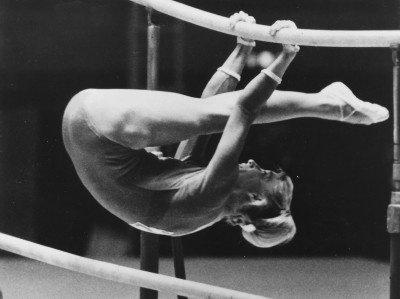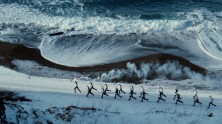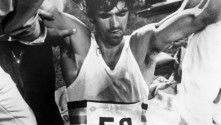
Tokyo Olympiad
(Tokyo Orinpikku)
Japan, 1965, DCP, color, 170 min.
Japanese with English subtitles.
DCP source: Janus Films
Commissioned by the Japanese Olympic Organizing Committee, Ichikawa’s landmark documentary on the 1964 Tokyo Games is, by his own description, an experiment in capturing “the solemnity of the moment when man defines his limits… the solitude of the athlete who, in order to win, struggles against himself.” The Olympic Games, as a grand spectacle of national athlete performing for patriotic glory, are decentered, reinterpreted instead as an opportunity for observation of bodies and the human spirit. Sequences of the performing athlete are defamiliarized in the conventional Olympic sense, with frequent close-up telephoto shots and slow-motion delaying, fracturing, or outright denying of linear attempts to harness dramatic narrative between individual and achievement.
To the displeasure of the Olympic Committee, the dramatic structures of the new Olympic Tokyo landscape are given little significant screen time, save as happenstance backdrop––if anything, the film seems critical of attempts to harness the documentary camera as patriotic producer of national symbols, beginning, poignantly, with a shot of the iconic rising sun melting into a giant wrecking ball demolishing the rotting infrastructure of old Tokyo. Instead, Ichikawa’s lens is decidedly interested in a humanistic effort; using the camera to inspire awe at the performance of the human body during the Olympic event, measured not by victory, but by the fleshy quirks inaccessible to the unaided human eye.












